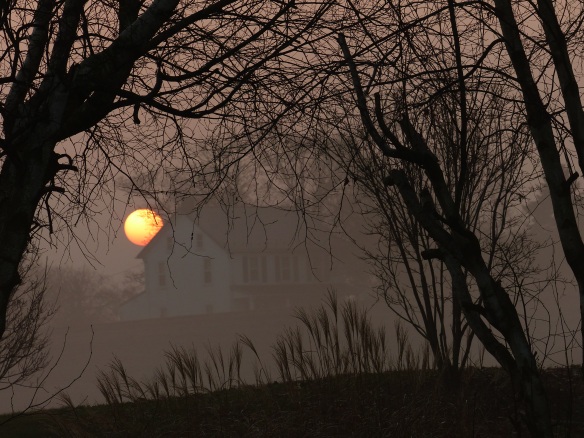The sun rises big and orange through the early morning mist. In that instant I have a flash of insightful awareness: never apologize for self-publishing. It is an art and a gift. (Photography credit: Wayne Reidinger).
Self-publishing allows an author to put his/her work out there for the pleasure of others without the pressure of an editor’s deadline for the next book. A manuscript is like a fine wine that grows in richness and flavor with time and patience.
You cannot–must not–rush the process.
Lynda Purinton of New Gloucester, ME, says of Beware the Sleeping Dog self-published under my plum de nom K.A. Libby: I so enjoyed (the book). I was hooked at the first paragraph. I didn’t figure out who the villain was and look forward to reading more. You are amazing!

